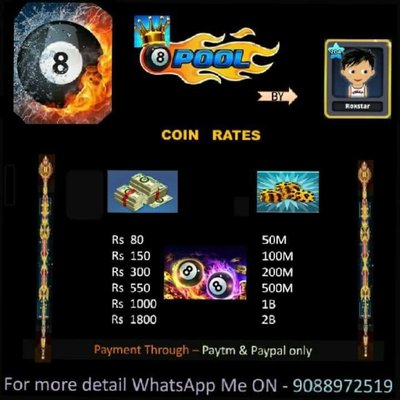


You keep playing your object balls on your visit to the table until you fail to pocket a shot. In other words, you can use the 8-ball in combination with another object ball to pocket an object ball, as long as you don't strike the 8-ball first. The object ball that you called does not go into the designated pocketĬombination shots are legal shots, but you can never use the 8-ball as the first contacted ball.If you pocket a ball while lobbing another ball off the table (shooting a foul).If you jump the 8-ball off the table, you lose altogether! So keep your eye on that ball and be careful! If you jump a ball-other than the 8-ball-off the table, you lose your turn Illegal PocketingĪ ball is considered illegally pocketed for the following reasons: Your opponent may then play the cue ball in hand from anywhere on the table (this does not necessarily have to be from behind the headstring-that just applies to the opening break). If either of the balls does not contact the side of the table, the shot is considered a foul.

You can make the cue ball bounce off the side of the table (bank shot) before striking the object ball, but the object ball must be pocketed, or it, or the cue ball, must contact the side of the table. Here's the catch: On all shots-after the break and not when the table is open-the player must hit one of his group of balls first, and either pocket a ball, or make a ball (or the cue ball) contact the side of the table. Making ContactĪll this sounds pretty easy, right? Well, not exactly. So if you call “9-ball in the corner pocket” and you manage to pocket that called shot, then you will be stripes for the remainder of the game. The solids are numbered 1-7 and the stripes are numbered 9-15. Your selection is determined only after you pocket a called shot. Now that the table is open, it's time to pick your group of object balls. Looking for more fun games for your kids? Check out our top classic board games! Stripes or Solids? Your opponent can continue play on the open table at this point. If you make a direct strike on the 8-ball, you lose your turn and any pocketed balls remain pocketed. You can only hit the 8-ball as part of a combination shot at this point during the game. It is even legal to strike the 8-ball when the table is open-but don't pocket the 8-ball. You may strike any object ball at this point, whether it is striped or solid. The table is always considered open immediately following the break shot. The table is considered “open” after the break shot, meaning that stripes or solids have not yet been determined.Your opponent then takes position at the table and may continue shooting or take the cue ball in hand and play from behind the headstring. If you shoot a ball off the table during an opening break, you forfeit your turn.The opponent can rebreak if the 8-ball is pocketed or can spot the 8-ball on the table on the footspot. If you pot the 8-ball on a break shot, all the balls stay potted except the 8-ball, which is returned to the table.If you fail to make a legal break (no ball is pocketed), then your opponent may decide to shoot the balls as they rest on the table after the break, or the opponent may choose to rebreak.If you are making the break, you may make another shot as long as at least one ball on the break was legally pocketed.The opening break is never a called shot.One way or another, your turn is forfeited to the next player. However, many people prefer to return the slopped ball to the footspot. If you pot a ball that you did not call (called “slopping”), official rules say to leave the ball in the pocket. If the shot is obvious, you don't have to call it, but your opponent is entitled to ask if he or she is not sure. First you pick your shot, then you say it aloud so your opponent can hear you: “Five ball in the corner pocket” or whatever the shot is that you're about to make. Eight Ball is generally played as a call shot game, which means that before you hit a ball, you must call the shot.


 0 kommentar(er)
0 kommentar(er)
